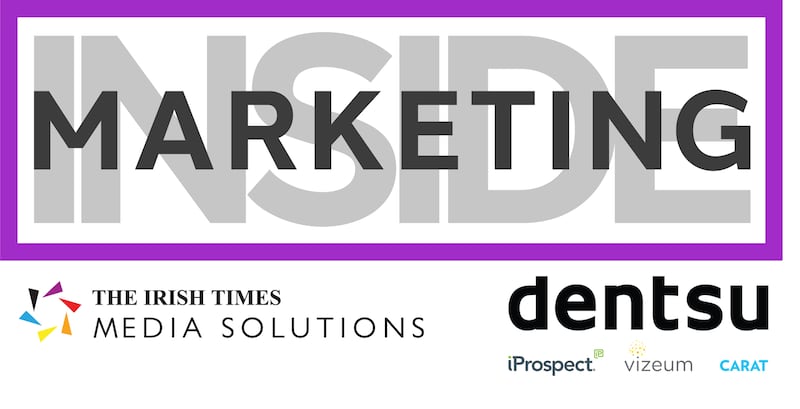The economic and social impact of Covid-19 has rightly dominated the strategy of marketers for most of 2020. But with the arrival of a vaccine and a return to some sort of normality, digital marketers will have to face up to the biggest challenge of the coming decade: the move to a privacy-first marketing ecosystem.

The main casualties of this evolution in the short term will be existing targeting and measurement models. This increased fragmentation will result in a splintered marketing plan.
As you can imagine there is a lot of noise, chaos and confusion as the industry figures out how to transition to this new environment – and still enable marketers to target and measure their marketing spend. To help marketers get a high-level understanding of the effects of fragmentation, I have put together a handy cheat sheet.
In the final Inside Marketing podcast episode of 2020, a year like no other, Ciaran O'Kane, CEO of WireCorp, returns to look at what the future holds for marketing in 2021. Listen now:
The importance of the authenticated web
What is the authenticated web? Think of it as the logged-in internet. First-party data is the new gold standard for marketers and media owners. Persistent IDs, with explicit opt-ins from users such as email and mobile numbers can enable marketers to measure and target campaigns in a privacy-first way.
There are tech solutions like LiveRamp and Zeotap that can help marketers work with first-party publishers – those with scaled logged-ins. It’s important to note that this will only cover about 15 per cent of the open web.
Data management infrastructure is critical
Data management and activation is absolutely critical for brands in this new fragmented world. The customer data platform (CDP) is the latest piece of ad tech that is gaining traction with marketers. It’s hard to keep track of all of the three-letter acronyms, but this is one marketers should keep in mind. A CDP is a platform that hosts, segments and activates all client data (website, email, cookie etc), aggregating it into a unified ID that can be used to optimise user experience, target ads and help with measurement. You might be aware of its precursor, data management platform (DMP), now redundant given its use of third-party cookies.
With only 15 per cent of the open web accessible to data-driven targeting and measurement, you need to have a strategy for the anonymous web. This is effectively passer-by traffic across Android, iOS, Chrome, Safari and Mozilla. These users are not logged in, and as such are not identifiable.
This is where 3p cookie and IDFA deprecation will have the biggest effect. There are a bunch of solutions that are trying to address this; from contextual to clean rooms. It is really important that you have a strategy for the anonymous web as you cannot access users through Google alone.
Contextual is king on the anonymous web
Marketers need to invest in contextual targeting solutions if they are to reach an audience on the anonymous web. Contextual has always been important, but it is absolutely critical now. There are a vast array of vendors offering this type of solution. Advances in natural language processing (NLP) means that contextual targeting can be as effective as behaviour-focused strategies. Context is getting an AI overhaul, making it a go-to solution for marketers.
The ‘clean room’ a possible solution
Clean rooms are not a new innovation. Google, Amazon and Facebook have been operating “clean rooms” for some time, allowing marketers to match email with “walled garden” data. Ultimately this is a very GAFA-centric solution with a focus on these siloed platforms.
The new wave of clean room solution providers, such as Infosum, are looking to join data across different marketers and publishers. This will help to scale data-driven buys across the anonymous web and should be attractive to marketers looking to “co-op” data in a privacy-first way. Much of the data joining is based on non-PII data points, a schema that connects disparate data sets.
Google, Facebook and Amazon cannot solve all your problems
The walled gardens remain important buying points for digital marketers. But with the deprecation of identifiers on the Apple and Mozilla ecosystem, it hobbles their ability to do blanket targeting and measurement. You can buy a walled-garden user, but are you really going to ignore 40 per cent of the population using Apple devices?
These users are the most affluent segment in the market. Giving all your spend to the walled gardens might seem like a logical move to tie spend to outcomes, but it must be emphasised again that these walled gardens represent just a portion of the user’s attention on the web. It is critical that marketers explore other options.
Partner with publishers with scaled first party data
Given that this is an Irish Times column, it would be amiss of me to not highlight the importance of premium publishers. Firstly, they have incredible context-rich environments. Compared to the user generated content platforms like YouTube, Facebook and Instagram, big premium publishers offer professional content and an addressable audience at scale. With the advent of clean rooms and privacy-first ID solutions, large premium publishers should be on every plan for marketers.
Rethink measurement
It cannot be understated how important the third party cookie is for measurement. A cookie is necessary to measure the effectiveness of digital marketing campaigns. How will you measure the success of advertising on iOS, Safari and Mozilla, and what happens when Google deprecates the cookie? How will this affect attribution? Thankfully we are seeing some interesting vendors emerging to address this huge problem.
They are using non-PII data to model audiences and build robust attribution models that help marketers work across cookie-dead zones. It can’t be stressed enough how important this one is. Google will not be able to solve your measurement issues here. Reach out to the new wave of ID solutions and bake them into your attribution model.
Partner with agencies/consultancies that understand the new reality
The end of the cookie is not the only problem faced by marketers. The break up of the walled gardens is inevitable in the coming 12 to 24 months. What happens if YouTube or the Google ad tech layer gets spun out of Alphabet, or what if Facebook is forced to divest Instagram? Add to this the growing number of data-driven platforms like CTV, DOOH, AR, gaming and audio that you will need to buy across. The only thing you are guaranteed in these scenarios is more complexity.
It is important that you have the right partners. The managed service layer is critical to the success of your paid marketing strategy. Can your agency or consultancy advise you on the best technology, data strategy and measurement? Marketers need to have partners that get ahead of this – and don’t offer a Google-only solution.
This “great fragmentation” should be seen as an opportunity for marketers to wean itself off a failed system. Cookies were not designed to be used for digital marketing. It simply became a convenience for the industry eager to scale.
Now we have the opportunity to reimagine how we execute and measure marketing on the web. It’s a chance to put the user first and to be less reliant on a handful of walled gardens that have ultimately gamed the “cookie ad economy”. This fragmentation might seem daunting for marketers, but it will ultimately be a positive evolution for the industry.
Ciaran O’Kane is chief executive of WireCorp
For more information, you can visit irishtimes.com/insidemarketing.
The Inside Marketing podcast is available on Soundcloud.












